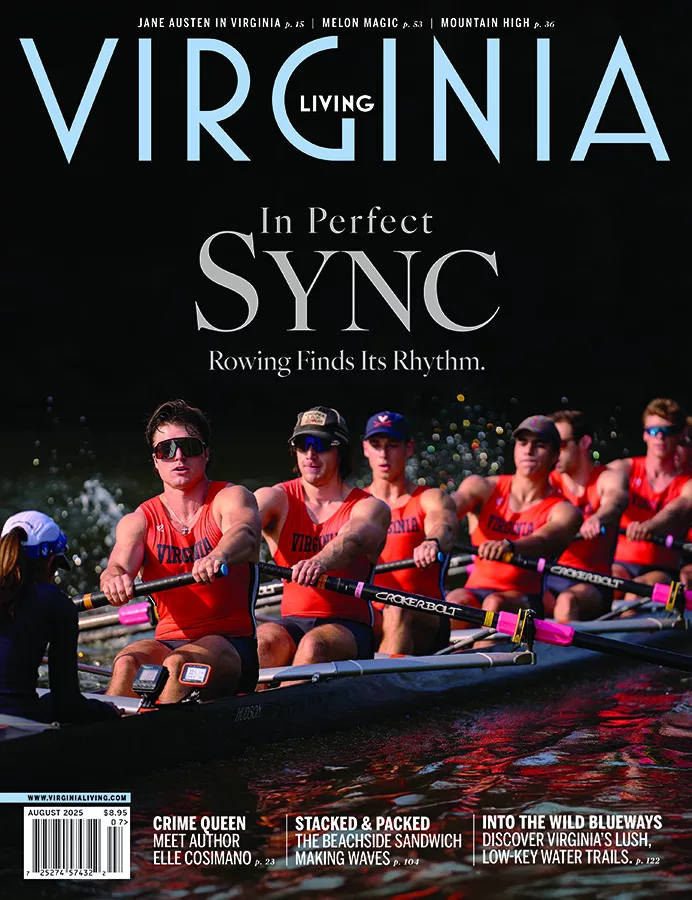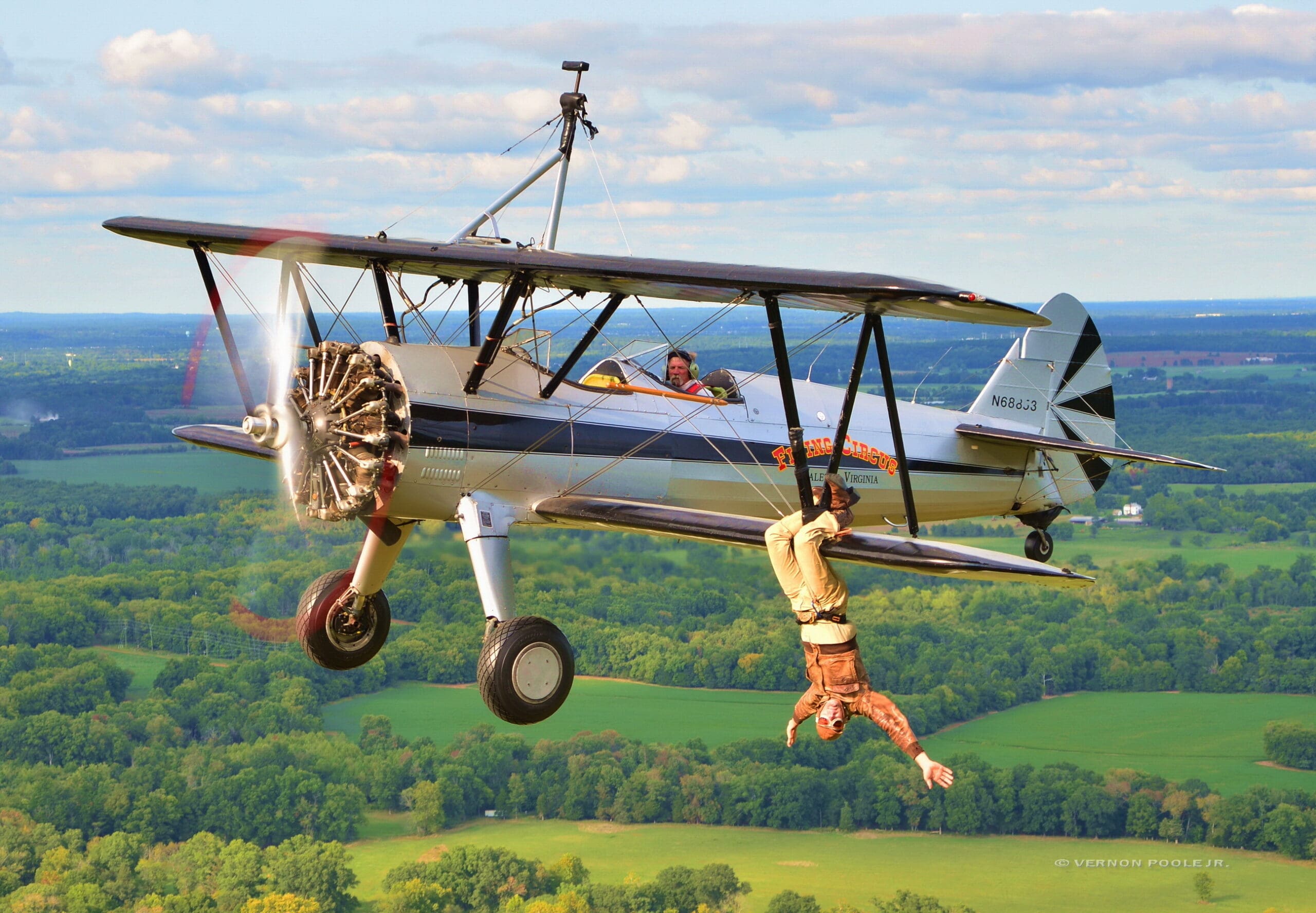–By Orrin Konheim
On paper, the Flying Air Circus is a volunteer-run organization dedicated to promoting and preserving historical aviation. But few organizations dedicated to preserving and promoting aviation put on such a spectacular show.
The Flying Air Circus, founded in 1971, has been continuously operating for 53 seasons, making it the longest-running show of its kind in the nation.
Recreating the milieu of the barnstorming shows after World War I when many people had their first exposure to planes, the 90-minute show that runs May–October on Sundays uses authentic vintage planes and skilled pilots engaged in acrobatic stunts. There are also theatrical elements with a show announcer, a red baron playing the role of the villain, a damsel in distress, and wing walkers.
All of the acts can be traced back to the early days of aviation in both civilian and military traditions. When the planes drop flower packets onto the airfield, it harkens to a military technique used to simulate dropping bombs from airplanes. The wing walk—one of the show’s trademarks—was a way for barnstorming to advertise their shows. Even the work of mailmen in the early days of aviation is incorporated into a trick where a plane picks up a mailbag hanging on a rope between two mailboxes. The most spectacular acrobatics, however, come from dogfighting.

“There was a lot of dogfighting and development of very specific skills with a steep learning curve in WWI, and that was what led to such advanced acrobatics,” says Mark Lepusic, manager of the show’s operations.
Lepusic’s father was one of the co-founders of the original show. At the time, pilot Ken Hyde saw a great opportunity in a 200-acre farm with a quaint Victorian house in Fauquier County. Hyde drew inspiration from a flying circus in the Catskills of New York and took his pilot friend, Stan Harris, along to see the show. Harris was a decorated Air Force veteran who was serving in Virginia’s House of Delegates. He would later help clear the bureaucratic hurdles for Virginia’s Flying Air Circus.
Seventeen people formed the show’s first board. Most were aviators, and many brought their own vintage planes to the act. The rest came from a British film company that sold off their inventory when a series about the Royal Air Force never materialized.
Today, all but two planes are owned by the individual pilots themselves. Many of the original pilots passed their planes to their kids who are now part of the rotating cast of flyers involved in the show.

Photography by Vernon Poole
Pilot Frank Isbell started building model airplanes at the age of 3 and soloed by the time he was 16. Another pilot, Dave Conn, saw this very air show when he was 11 and got the opportunity to buy the plane he currently flies from his dad some 40 years ago.
Pilot John Potock’s father, Walt, was an esteemed Air Force pilot who was honored by the Commonwealth upon his death. Potock followed his father into the air, and like many other pilots in the fleet, he is a commercial pilot.
“A lot of the pilots’ parents have flown, so it’s like a family. We’re a very close-knit group, and that’s part of what keeps us here. It’s like a tradition,” says Lepusic.
Similarly, the show has lifelong fans among its participants.
Alexandria resident Michael Constandy grew up in a family of aviation enthusiasts and has seen the show many times. “Going just to see this dramatic recreation once wasn’t enough,” he says. “We would not only see the show but we would see the Stearman aircraft and take rides and do aerobatics. That never gets old.”
Another fan, Nick Wukovich, was first attracted to the show by billboards he’d spotted along Route 17. And since he’s a local, he also sees the planes flying overhead on Sundays. “It has universal appeal,” he says. “They’re obviously passionate about the planes. You can tell they love what they’re doing. And you can tell it’s a wonderful hobby to have—to fly for fun.” 5114 Ritchie Rd., Bealetown. FlyingCircusAirShow.com


The annual Flying Circus Airshow Hot Air Balloon Festival is the special Saturday and Sunday airshow event . The FCA is the only airshow in the world where you can see (and ride) these classic biplanes and balloons at the same time in the same airspace.

Dave Brown flying his PT-17 through a vertical roll as part of his aerobatic display.
This article originally appeared in the October 2024 issue.










